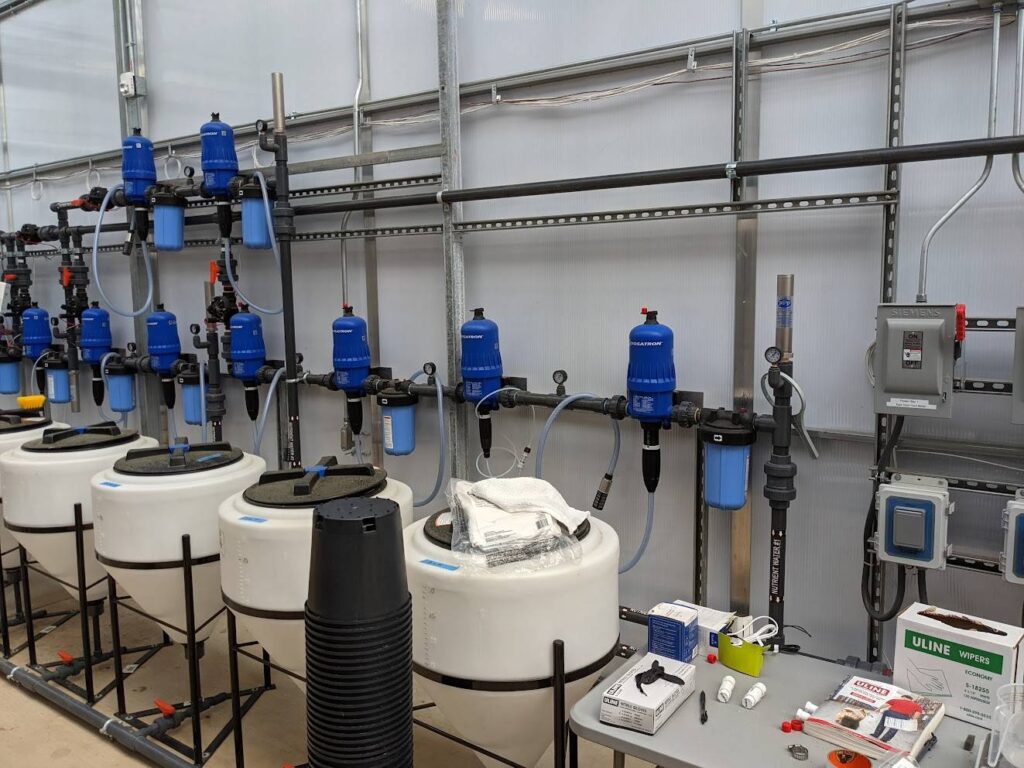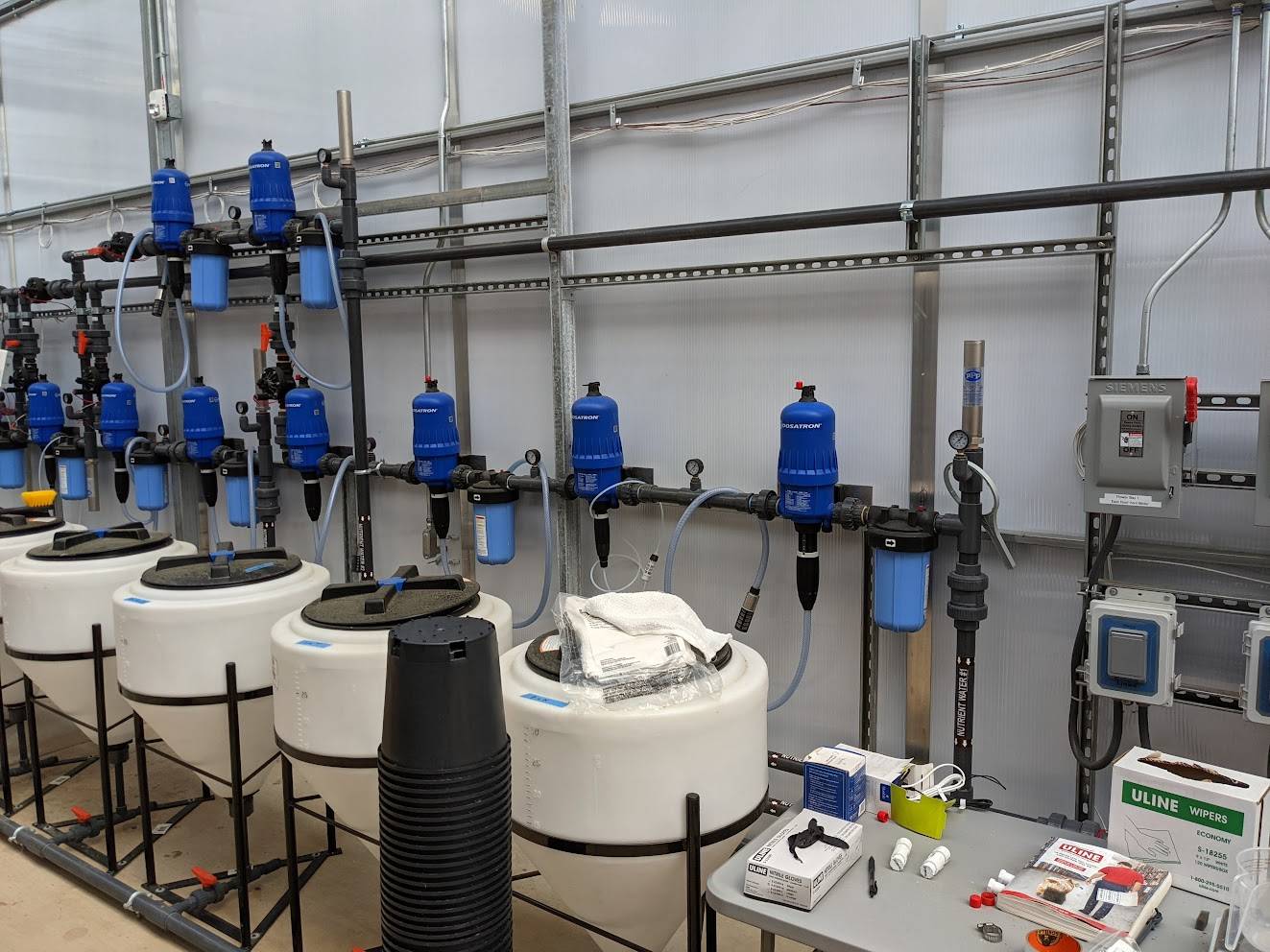
Interview by Judith Reynolds, Freelance Copywriter & Cannabis Expert
Plant profiling and analysis is important for efficient crop production
Everyone knows what plants need: light, air, water and nutrients. Growing the cannabis plant is an endeavor many take on, but few know how to perfect. The process often involves a lot of trial and error when it comes to finding the best combination of these items, and today we will be looking at Nutrient Profiling.
What do your plants need to not only survive, but thrive and produce an abundant crowd pleasing product? What if there was a easy-to-use online tool that could provide you a perfect baseline formula for your plants?
I sat down with the Principal of Green Belt Strategies, Cameron Bravmann in a recent interview, to discuss the importance of nutrient profiling, and how his Plant Nutrient Calculator can be used to assist growers in optimizing their nutrient inputs for a successful harvest.
The Importance of Plant Nutrient Profiling, an Interview with Cameron Bravmann
In your own words, what is plant nutrient profiling?
Cameron: Plant nutrient profiling is attempting to build a nutrient program for your plants (and it doesn’t have to be cannabis specific) that caters to their needs based on phase of life. As that pertains to cannabis, there’s a perceived wildly different appetite of the cannabis plant as you move from vegetative life to flower life. However, this misunderstanding is largely based on marketing hype, and the need for plant nutrient manufacturers to collect bigger profits from end users.
Plant nutrition is based on a total of 17 elements. These elements are divided into Macro, Secondary, Micro and Trace nutrients. The macro elements are Nitrogen, Phosphorus and Potassium, also known as N-P-K. The secondary elements are Ca, Mg, and S (Calcium, Magnesium and Sulfur). Plants also need carbon, hydrogen and oxygen, as well as diminutively small amounts of several other items.
Deficiency is caused by low levels of elements, while toxicity happens at levels that are too high. However, deficiency of one element may present as symptoms of toxicity from another element, and vice versa, which is why plant nutrition can be a difficult subject to grasp. When Cameron walks into a facility, especially one that is operational, but suffering from substandard yield, he starts with a basic formula of 100/100/200 N-P-K.
Why is plant nutrient profiling important?
Cameron: If you’re a cannabis grower and you want to grow a specific strain, think of it this way: if you go into a McDonald’s and get a cheeseburger in California, it must taste like the cheeseburger in New York and it has to taste like the cheeseburger in Paris. If you’re growing Blueberry, you want your Blueberry to be the same thing in Canada that it is in California that it is in Constantinople. You want a level playing field so that everything looks the same, grows the same, smells that same, and results in the same experience for each individual user, no matter where they purchase/consume your product.
Cameron went on to explain that while there are all purpose fertilizers out there, they don’t serve you well enough when it comes to cannabis. A cannabis grower will need multiple pieces to get the profile they want. The best way to buy these pieces is in bags, referred to as salts. Each one has some sort of elemental profile. For example, one piece might have a N/P/K ratio of 5/12/24. By dialing in how much of each piece is used, a grower can start to reach a formula that is close to the desired 100/100/200 ppm of N/P/K.
Is plant nutrient profiling for cannabis as complex as it sounds?
Cameron: The cannabis plant is not as finicky as some might have you believe. One of the ways nutrient companies and marketers take advantage of people is by creating a broken down system into smaller and smaller pieces in the form of different bottles that really aren’t that different from the other stuff. The program GBS has come up with is largely based on the Lucas Formula.
What exactly is the Lucas Formula, in your own words?
Cameron: It’s based on the general hydroponics nutrient line. Lucas took a 3 part cannabis specific nutrient line, stripped it down into two parts and used those two parts throughout the cannabis life cycle. What he discovered is once you break down the elementals in each bottle, there’s actually more nitrogen in the Micro formula than there is in the Grow. By stripping out the Grow, he was able to make his assumptions, which he then went on to test. His plants performed basically just as well or better as more complex nutrient profiles and programs. He was trying to conserve water, cut down on the amount of work he had to do, and save money on nutrients along the way too. He managed to accomplish all three.
How does water play a role in plant nutrient profiling?
Cameron: Generally if you’re a home grower and you’re using tap water, most trace elements are in your tap water to some extent, so you don’t have to worry about your micronutrients in the same way someone who is using RO water might. If you’re in a giant facility that is focused on multi-state operations, and strains that are specific to your company and/or brand, then you may consider using RO water, in order to ensure continuity of product look, feel, and affect, in much the same way that McDonalds cares about continuity in its customer experience.
It is important to note that people using RO water need to be mindful of the lack of buffer in the water, which can lead to unpredictable outcomes if left in a mixed state for too long.
“I’ve walked into facilities where they have an RO system,” Bravmann explained, “and they can’t figure out why their plant health is all over the place. Frequently, one of the things I do first is apply a blend of RO and tap water because I like the buffering nature of the combination.”
Unfortunately, this isn’t always an option, since tap water can vary from location to location, and can even vary from one time of the year to another.
Is there a strategy you recommend when it comes to plant watering and nutrient application?
Cameron: It depends on the facility, and certainly depends on their methodology, notably the media in which their plants are located. Generally, larger facilities are using some sort of inert medium, such as rockwool or coco. This type of media promotes better drainage than traditional soil, which means you can water more frequently.
The problem with watering once a day is that when the feeding cycle is done, there can be gallons of nutrients still in the line between the plants and the fertigation system. By the time they water the next day, the water in the lines may have begun to shift its composition, due to the lack of buffering in the RO water. One solution to this dilemma is to water more frequently, but with less volume per feeding. So if a plant needed a gallon of water a day, you might water it 15 minutes 4 times a day, giving it a quarter of a gallon at a time, rather than all at once for an hour. That way the solution isn’t sitting around as long and there’s less variability, etc.
When it comes to cannabis plant growth issues, Bravmann explained that routine testing of runoff, media, and tissue can help to identify issues before they become entrenched. Lab testing can reveal which elements the plants are absorbing the most and uncover any toxicities or deficiencies that may begin to present themselves. Many of these things look alike, so a baseline formula like the Lucas Formula is a great place to start when it comes to formulation.
Bravmann’s insight on the scientific process for collecting information and evaluating it to diagnose any plant problems is clearly based on knowledge, experience, and passion for the cannabis plants and its benefits. He has provided a plant nutrient calculator on GreenBeltStrategies.com for anyone interested in saving time, resetting their formula, or diagnosing a nutrient related problem.
What does the plant nutrient calculator on your website do?
Cameron: It takes the elemental ratios of salts and runs them through a calculation that converts it from the ratio into parts per million. This makes it easy for someone who is deciding to move away from a pre bottled, preordained formula into something that looks more like the steady diet that the cannabis plant can relate to and thrive on throughout its life cycle.
How does the plant nutrient calculator help growers struggling with their own formula?
Cameron: If a cannabis grow facility is struggling with their operation and the staff doesn’t know what the problem is after trial and error, we start with a baseline formula and make sure they have the elements that they need. But if we’re not there to help them reset, they could have a bunch of products they’ve never seen before and start plugging in all the numbers into the calculator. You can tinker with the result and adjust it, going through everything on your shelf and reformulating until you have a program that’ll work for your plants.
If you had to sum it up, who is your plant nutrient calculator best for?
Cameron: It’s not for beginners, per se, but rather intermediate to advanced home growers, or commercial growers, since they would naturally be advanced or expert. Mostly it is for anyone who wants to elevate their game, and understand how the nutrients interact each other, how the plant uptakes nutrients over its lifecycle, and dispel the mystery surrounding the cannabis plant diet.
Green Belt Strategies is a cannabis consulting firm here to help, not just with your business needs but also your grow. With the GBS Plant Nutrient Calculator, you might not need to call the cannabis doctor to diagnose your plants. Instead, you can utilize their FREE easy-to-use online nutrient calculator to discover a formula most ideal for your cannabis growth.
Get back on track, maximize your nutrients, and increase your confidence in your cultivation skills with the GBS Plant Nutrient Calculator!
Try out the GBS Plant Nutrient Calculator below!
Work With Green Belt Strategies
Applications can be stressful, fees aren’t always refundable, and if you don’t know what you’re doing you risk losing both your application and chance to apply for a cannabis license ever again in that State. If you’re feeling overwhelmed and looking to streamline your application process, consider working with Green Belt Strategies.
During the 30-90 days your application can take, GBS helps you organize and strategize in order to highlight your personal mission, goals, and to differentiate you from the competition. Never go into the application process blind! Education and knowledge is essential, which is why hiring professionals to help you achieve your dreams is your best bet.

